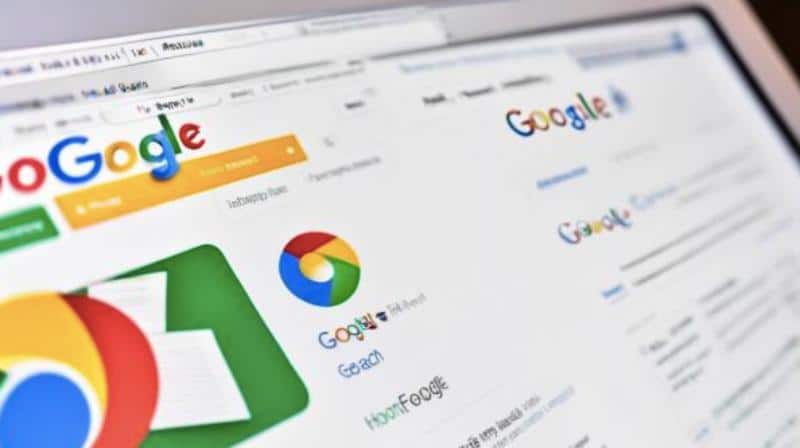Google’s Helpful Content is a critical shift in Google‘s algorithm established in 2022, aimed at boosting important and practical information. It directly demotes superficial content that merely strives for reputation enhancement without offering real value. A surprising outcome of this shift was a drastic plunge by 40% of less useful content showing up in search results. This has reinforced the need for creating content that genuinely benefits users while aligning with Google’s quality principles. Realizing these concepts can illuminate your path towards mastering the art of digital marketing.
Google’s “helpful content” update, launched in mid-2022, prioritizes informative and valuable content over content solely created for search engine ranking. It aims to reduce unhelpful content in search results by focusing on user experience and relevance. Digital marketers should emphasize creating content that genuinely assists and informs users, considering user intent and page experience evaluation to align with the update’s goals.

Overview: Google’s Helpful Content Update
In mid-2022, Google introduced the “Helpful Content” update as part of its core algorithm. This update is a significant step toward placing informative, valuable content at the forefront of search results, while pushing down content that exists solely for ranking purposes. The primary goal is to enhance user experience and provide users with reliable and relevant information in response to their search queries.
With this update, Google aims to shift away from showing shallow listicles or content created purely for SEO purposes when users seek insights into various topics. Instead, the focus is on presenting genuine, in-depth insights that align with the searcher’s intent. For instance, if a user searches for “best digital marketing tools,” Google strives to present results that offer authentic expertise rather than generic listicles crafted solely for ranking purposes.
Consider the difference between an article providing a detailed analysis of the top digital marketing tools based on rigorous research, and an article that simply lists a few tools without any additional context or analysis. The former aligns with users’ desire for valuable insights and information while the latter contributes little to genuine user understanding.
Moreover, this update underscores Google’s emphasis on E-A-T (Expertise, Authoritativeness, Trustworthiness) principles. The intention is to elevate content authored by reputed experts with reliable sources and establish a higher standard for what qualifies as valuable content.
Navigating through this updated landscape places emphasis on understanding how this shift towards genuinely helpful content impacts online visibility and the strategies businesses adopt to thrive in digital spaces.
Impact of the Update on SEO

The implications of Google’s emphasis on helpful and authoritative content are monumental. Previously, some websites attempted to manipulate their search visibility by resorting to tactics like keyword stuffing, thin content, or clickbait strategies. However, with the latest update, these manipulative practices saw a decline in visibility.
This shift represents a significant departure from previous core updates characterized by unpredictability and volatility. As a result of emphasizing user-focused, helpful content, the impact on search visibility has become more stable. This underscores the critical importance of consistently providing valuable information that truly benefits users rather than attempting to exploit algorithms for short-term gains.
One significant consequence of this shift is a diminishing reliance on traditional SEO techniques that prioritize quantity over quality. Rather than solely focusing on keyword optimization and content volume, emphasis is now placed on producing comprehensive, well-researched, and engaging content that aims to genuinely serve user needs.
Google’s commitment to reducing unhelpful content is evident in its efforts to reward websites that offer original, informative, and high-quality content. This underlines the need for SEO practitioners to adhere to these principles and pivot toward creating valuable resources.
Consider a scenario where two similar websites offer information about digital marketing. One website adopts outdated keyword-stuffing tactics, resulting in shallow and unoriginal content. On the other hand, a competitor adopts a user-centric approach, providing in-depth insights and expert analysis. With the recent update, the latter website would likely observe increased visibility due to its commitment to offering genuinely helpful content.
This fundamental shift underscores the necessity for SEO professionals to adapt their strategies to cater specifically to user intent and strive for depth and usefulness in their content offerings. By doing so, they can align with Google’s evolving evaluation criteria and sustain long-term search visibility by prioritizing the creation of valuable resources.
In summary, Google’s push towards rewarding helpful content marks a pivotal moment in SEO. The update signals a seismic shift away from exploitative tactics and emphasizes the enduring value of producing original, authoritative, and informative content that genuinely serves user needs. This substantiates the need for SEO practitioners to recalibrate their strategies towards creating actionable, valuable resources—an essential factor in maintaining sustained search visibility amidst changing evaluation paradigms.
Navigating the labyrinthine world of search engine optimization demands versatile strategies that encapsulate adaptability and precision. Let’s now delve into strategies tailored to achieve heightened prominence in online search results.
Strategies for Better Search Results

Let’s explore actionable tips for optimizing your content and website to align with Google’s emphasis on helpfulness and user experience. These strategies can positively impact your visibility and rankings, ultimately attracting more organic traffic to your site.
E-A-T Focus
Expertise, Authoritativeness, and Trustworthiness play a critical role in how Google evaluates a website’s content. To bolster these crucial elements:
● Showcase credentials and expertise prominently, providing clear information about the qualifications and knowledge of your content creators and authors.
● Incorporate trust signals such as client testimonials, case studies, and certifications to establish credibility within your niche or industry.
● Regularly update and maintain accurate author bios and profiles, highlighting relevant experience and expertise that aligns with the topics covered on your website.
An effective E-A-T strategy not only enhances your website’s credibility and trustworthiness but also instills confidence in both users and search engines, leading to improved search visibility and rankings.
Audience-Centric Approach

Understanding the needs and intent of your target audience is pivotal in creating content that resonates and delivers genuine value. Here’s how to adopt an audience-centric approach:
● Conduct thorough research to identify the common queries, pain points, and interests of your target demographic, utilizing tools like Google Analytics, social media insights, and keyword research.
● Create content that directly addresses user queries by providing comprehensive insights, practical solutions, or in-depth information tailored to their specific needs. This positions you as a reliable source of valuable information within your niche.
Implementing an audience-centric approach not only fosters stronger connections with your audience but also improves engagement metrics, contributing to a positive impact on your search visibility.
Page Experience Evaluation

Incorporating an optimal page experience is paramount in the current search landscape. Consider the following tactics to enhance your website’s user experience:
● Prioritize Core Web Vitals such as loading speed, interactivity, and visual stability to ensure seamless browsing experiences across devices.
● Optimize for mobile-friendliness by employing responsive design principles and formatting content for easy consumption on a variety of devices.
● Implement secure browsing protocols by using HTTPS and safeguarding against potential security threats or malicious activity.
By focusing on enhancing page experience metrics, you can bolster user satisfaction, encourage longer on-site dwell times, and potentially elevate your search rankings.
Now that we’ve touched upon strategies for optimizing E-A-T focus, adopting an audience-centric approach, and prioritizing page experience evaluation, let’s explore the significance of content evaluation in the context of Google’s helpful content update.
Case Study: Effects of the Update
The impact of the Helpful Content Update introduced by Google on website rankings has been substantial. To delve deeper into these effects, let’s examine a case study within the digital marketing niche to understand the specific changes observed and the strategies websites have used to adapt to this update.
One website catering to digital marketing professionals experienced a significant increase in visibility after the implementation of the Helpful Content Update. This success can be attributed to their unwavering commitment to producing helpful, well-crafted content that directly addresses the needs and challenges faced by digital marketers. By ensuring that their articles, guides, and resources were not only well-written but also genuinely beneficial to their audience, they were able to maintain a strong position in search rankings and even observed an upward trend in visibility.
In contrast, another website within the same niche, which previously relied on keyword-stuffed, low-value content to drive traffic, experienced a decline in visibility following the implementation of the Helpful Content Update. Their rankings suffered as Google’s algorithm increasingly favored content that truly delivered helpful insights and valuable information to users.
This case study emphasizes the importance of aligning content strategies with user intent and delivering valuable, meaningful information. It underscores the significance of catering to the genuine needs of your audience and providing content that serves as an authoritative resource within your niche.
Learning from these case studies and understanding how specific websites in the digital marketing niche were affected by the Helpful Content Update can provide actionable insights for optimizing content strategies. Embracing genuine helpfulness and expertise in content creation can lead to improved visibility and sustained success in search rankings.
As we have seen from these case studies, aligning content strategies with user intent is crucial for adapting to Google’s updates and maintaining a strong online presence. Let’s now explore effective ways to move forward and adapt to these dynamic shifts in search result rankings.
Moving Forward: Adapting to Google’s Updates

Adapting to Google’s ever-evolving algorithms is crucial for businesses and marketers who want to maintain visibility in search results. It all comes down to staying informed, flexible, and strategic.
The first step in adapting to Google’s updates is staying informed yourself. Regularly monitoring industry best practices, changes in Google’s algorithms, and official announcements from Google can give you an overview of what’s changing and what needs attention.
Another crucial aspect is auditing your content. This means reviewing your website’s content to ensure it aligns with user intent, E-A-T (Expertise, Authoritativeness, Trustworthiness) principles, and the page experience standards outlined by Google. By doing this, you’re ensuring that your content meets the expectations of both users and search engines.
For instance, if your website features medical or financial information, it’s paramount to establish expertise and trustworthiness through accurate, well-researched content authored by professionals or experts in the field. Think of it like maintaining a high standard for information in a library; you want all the books to be reliable and accurate as per the subject matter they cover.
In addition to content auditing, it’s crucial to keep an eye on upcoming updates and trends. By doing so, you can proactively adjust your digital marketing strategies to align with new standards set by Google.
For example, if Google announces a new emphasis on mobile-friendliness, you can focus on optimizing your website for mobile devices to ensure a seamless browsing experience for users accessing your site from their phones or tablets. Utilize Google Webmaster Central Blog and various SEO forums to stay updated on algorithm changes and best practices recommended by industry experts.
Staying ahead of these changes is not just about reacting quickly; it’s about foreseeing what will impact your online presence and making the necessary adjustments before those impacts affect your rankings.
Understanding how to adapt and cater to Google’s updates is vital for enhancing your digital presence. Now, let’s address some common queries related to Google’s latest helpful content update.
FAQ: Google’s Helpful Content Update
Q: What is Google’s Helpful Content update all about? A: Google’s Helpful Content update emphasizes the importance of creating content that genuinely helps users. This means focusing on providing valuable, relevant, and user-friendly information to enhance the overall experience of online search.
Google is refining its ranking systems to better understand the nuances of different search intents, ensuring that it delivers the most relevant and beneficial content to users. Therefore, for website owners, content creators, and digital marketers, optimizing content to align with these objectives becomes crucial for maintaining visibility and driving organic traffic.
Q: How can I optimize my content to align with Google’s Helpful Content update? A: To optimize your content for this update, consider these key aspects:
● Prioritize User Intent: Understand the specific needs and search intents of your target audience for different queries. Develop content that directly addresses these needs, providing in-depth and comprehensive information within your niche.
● Enhanced User Experience: Ensure that your website offers a seamless, user-friendly experience across various devices. This includes fast loading times, easy navigation, and mobile responsiveness, which contribute to overall user satisfaction and engagement.
● Quality and Relevance: Create high-quality, well-researched content that directly addresses the topic or query at hand. This entails using accurate information, credible sources, and engaging formats (such as videos, infographics, or interactive elements) to convey the message effectively.
● Structured Data Implementation: Incorporate structured data markup where relevant to provide search engines with additional context about your content. This can enhance the visibility of rich snippets in search results, improving the overall presentation of your material.
Imagine if someone is searching for “best SEO practices.” Your article provides a detailed breakdown of current SEO strategies, actionable insights, and case studies. Using structured data to mark up this content increases the likelihood of Google recognizing its relevance and presenting it as a featured snippet or within relevant search carousels.
Just think of structured data as adding special labels to your content—the kind that makes it stand out and say, “Hey Google, I’m very helpful!”
By adapting your approach in line with these principles, you can boost the visibility and relevance of your content in response to Google’s evolving ranking criteria.
Understanding and utilizing Google’s helpful content update is essential for anyone looking to improve their visibility in online searches. By focusing on creating genuinely helpful content, website owners and digital marketers can enhance their online presence while providing value to users.
